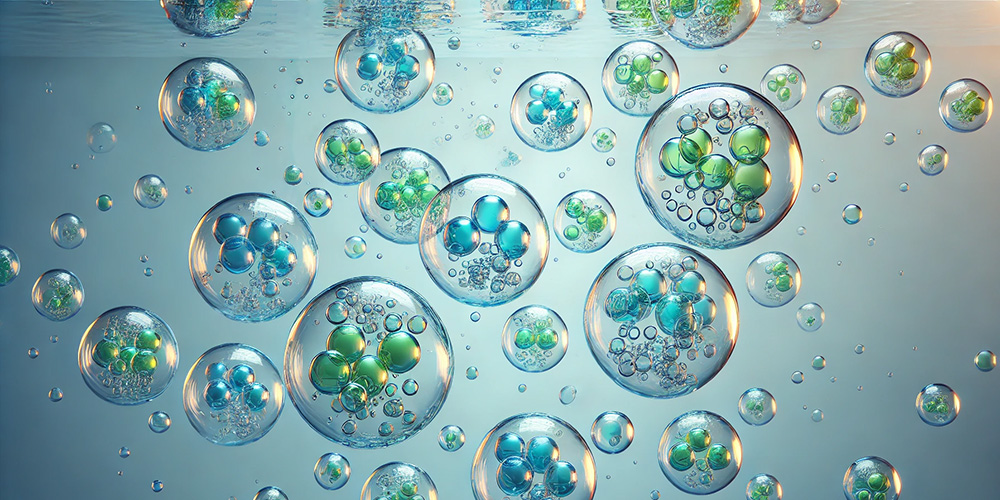Cells can generate vesicles as a response to changes in their environment. Although such cell-derived vesicles have great potential for biomedical research, their membrane is fragile and they have tendency to cluster together. Researchers at the University of Basel have successfully introduced a strategy to overcome these issues by equipping the vesicular membrane with a stabilizing shell.

Researchers at the University of Basel have developed a precisely controllable system for mimicking biochemical reaction cascades in cells. Using microfluidic technology, they produce miniature polymeric reaction containers equipped with the desired properties.

Many diseases are caused by defects in signaling pathways of body cells. In the future, bioactive nanocapsules could become a valuable tool for medicine to control these pathways. Researchers from the University of Basel have taken an important step in this direction: They succeed in having several different nanocapsules work in tandem to amplify a natural signaling cascade and influence cell behavior.
An interdisciplinary team from the University of Basel has succeeded in creating a direct path for artificial nanocontainers to enter into the nucleus of living cells. To this end, they produced biocompatible polymer vesicles that can pass through the pores that decorate the membrane of the cell nucleus. In this way, it might be possible to transport drugs directly into the cell’s control center.

Researchers at the University of Basel have developped molecular factories that mimic nature. To achieve this they loaded artificial organelles inside micrometer-sized natural blisters (vesicles) produced by cells.

For the first time, an interdisciplinary team from the University of Basel has succeeded in integrating artificial organelles into the cells of living zebrafish embryos. This innovative approach using artificial organelles as cellular implants offers new potential in treating a range of diseases.
Researchers at the University of Basel succeeded in developing capsules capable of producing the bio-molecule glucose-6-phosphate that plays an important role in metabolic processes.

Scientists from the University of Basel have succeeded in organizing spherical compartments into clusters mimicking the way natural organelles would create complex structures. They managed to connect the synthetic compartments by creating bridges made of DNA between them.
Scientists at the University of Basel have developed nanoparticles which can serve as efficient contrast agents for magnetic resonance imaging.

